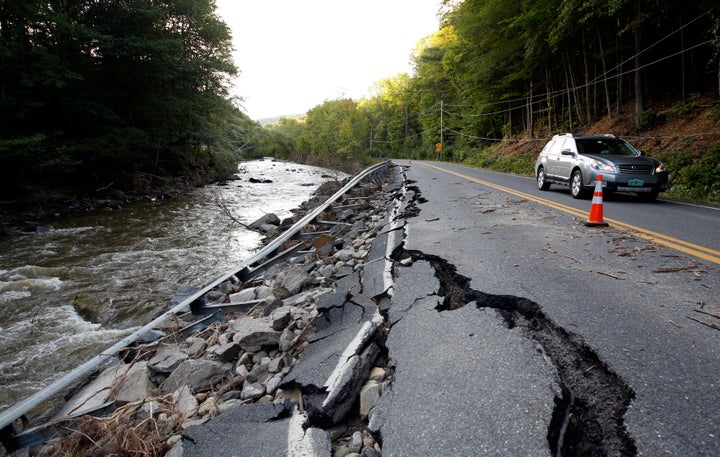
Remember “Infrastructure Week” last month? No?
That’s not surprising. Given that it was clearly the Trump administration’s attempt to distract from the various scandals plaguing Washington, few paid it much mind.
But let’s imagine what could have happened if the administration had engaged thoughtfully and meaningfully on infrastructure this month. Of all of the things that Trump campaigned on, the dismal state of American infrastructure was one of the few issues that is both true and bipartisan.
To “make infrastructure great again,” any and all legislation should absolutely consider climate change when planning for the future of America’s roads, bridges, electric grid and other important systems. To deny its impact on infrastructure is to force states to pay to build and rebuild after climate-fueled natural disasters that will become more frequent and more intense. Not factoring climate into infrastructure improvements is a waste of taxpayer dollars, plain and simple.
The Trump administration, to varying degrees, has claimed time and time again that it’s impossible to know the impact of human activity on our climate. Unfortunately for the administration, the science is not on its side. Rigorous science tells us that increases in the intensity and frequency of extreme weather events, like heavy rains and flash flooding, droughts and wildfires, prolonged and exaggerated heat waves, rising seas and associated coastal flooding, bear the fingerprints of global climate change. What’s more, the scientific community is in undeniable consensus: human activity is changing the climate and enhancing these impacts.
Just ask citizens of Vermont their opinion about failing to take account of increasingly extreme weather events when planning new road construction after a natural disaster. NOAA data show that, across the nation, increased rainfall linked to climate change has been producing more and larger floods that cause enormous economic damage and risk American lives for years. A downgraded Hurricane Irene, for example, dumped up to 11 inches of rain across most of Vermont in August of 2011. More than 300 bridges, 800 homes and businesses, and 6 railroad lines were damaged or destroyed; and at least 3 people died.
Vermont balked mightily when FEMA rejected their plan to upgrade certain bridges for cause in comparison to uniform pre-disaster designs that then existing federal codes required. They appealed the necessity of uniform standards on length, height, and location and, fortunately for taxpayers, they won exceptions on November 9, 2016 for bridges built in constricted urban spaces and high-volume locations dominated by high sediment transport. Note the 5-year discrepancy in time.
Vermonters understood in 2011 that they were living in a non-stationary climate. For their own good, they risked forfeiting federal reimbursement by deciding to move forward without prior and guaranteed FEMA approval. They have successfully endured a number of very large storms since, but they are more secure for eschewing the notion that one failed bridge design should fit all.
Similarly, we must take climate in account when looking at our health care system. It would be foolish to build new medical facilities without recognizing that severe heat waves will occur more frequently, that new diseases will emerge in nearly every location, and that climate change will dramatically alter the profiles of the major medical challenges that will face hospitals and medical staffs across the country. Missing those futures in the planning stage would guarantee that the new facilities will be woefully underprepared.
Along our coasts, building new port facilities without taking account of sea level rise would similarly guarantee that they will be flooded and damaged with increasing frequency. It should be noted that the Department of Defense will not make this mistake even during the tenure of President Trump. Secretary Mattis has already reasserted the long-standing DOD understanding that climate change is a “risk enhancer”, not only for strategic planning, but also for plans to refurbish military installations around the country and the world. They will not stop short of arming, for example, the Newport News Shipyard against current and future coastal flooding.
These few examples should make it clear that the Trump administration’s dismissal of the growing threat of climate places most of the $1 trillion infrastructure investment package unnecessarily at risk. Well over half of all Americans―and a majority of people in all 50 states―think that the climate is changing and that it will continue to change. What if these constituents were to speak up in upcoming statewide elections?
Americans understand that human actions are a primary cause of climate change, and that something has to be done. Reaching members of Congress to demand prioritizing climate in infrastructure improvements would be a heavy lift in this political environment, but that is how American democracy is supposed to work. Washington is supposed to acknowledge and support the informed will of the people, and not the contrarian will of the president.
